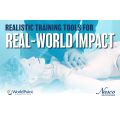Hands-Only CPR vs. Conventional CPR: Pros and Cons
Imagine this scenario: you're in a room, and suddenly, someone falls to the ground, holding their chest and struggling to breathe. It's a tense situation but knowing cardiopulmonary resuscitation (CPR) can make all the difference. CPR is a valuable skill that can help turn a frightening moment into a hopeful one, providing a lifeline when it's needed most.
In a world where every heartbeat counts during a cardiac emergency, CPR knowledge becomes a beacon of hope. But here's the thing: CPR isn't a one-size-fits-all solution. It comes in different forms, each with its own set of techniques and considerations. In this article, we embark on a journey into the realm of CPR, where we'll unravel the intricacies of Hands-Only CPR and Conventional CPR. We'll explore their unique advantages and drawbacks, empowering you with the knowledge to make informed choices in the face of an emergency.
Comparing Hands-Only and Conventional CPR
Hands-Only CPR:
Hands-Only CPR, as the name suggests, involves providing chest compressions without the addition of mouth-to-mouth ventilation. It's a simplified approach that focuses solely on the crucial chest compressions element of CPR and is commonly taught in community training for lay-responders.
Conventional CPR:
Conventional CPR, on the other hand, includes both chest compressions and rescue breaths (mouth-to-mouth ventilation). This is the traditional method that has been taught for decades and continues to be taught to healthcare professionals.
Now that we've introduced both methods, let's take a closer look at the pros and cons of each.
Pros & Cons of Hands-Only CPR
Pros:
- Simplicity: Hands-Only CPR is easier to learn and remember, making it more accessible to the general public.
- Greater Willingness to Act: Many people hesitate to perform CPR due to concerns about providing mouth-to-mouth ventilation. Hands-Only CPR reduces this hesitancy, encouraging more bystanders to initiate CPR immediately.
Cons:
- Limitation: Hands-Only CPR may not be as effective as Conventional CPR in certain situations, especially when dealing with drowning victims or individuals who have stopped breathing due to respiratory issues.
- Limited Oxygenation: Without rescue breaths, there's a limitation in the amount of oxygen being delivered to the patient's lungs.
Pros & Cons of Conventional CPR
Pros:
- Improved Oxygenation: Conventional CPR provides both chest compressions and rescue breaths, ensuring a better supply of oxygen to the patient's brain and vital organs.
- Versatility: Conventional CPR can be more effective for a wider range of cardiac arrest situations, including cases where oxygen levels are critically low.
Cons:
- Complexity: Conventional CPR is more complex and requires proper training to perform rescue breaths effectively.
- Risk of Disease Transmission: There's a small risk of disease transmission when performing mouth-to-mouth ventilation. It's worth noting that if you're trained in Conventional CPR, you can still use barriers like face shields or pocket masks to reduce the risk of disease transmission.
Why Hands-Only Has Risen in Popularity
Hands-Only CPR has gained popularity for several reasons:
- Reduces Bystander Hesitancy: People are more likely to initiate CPR when they don't have to perform mouth-to-mouth ventilation, as it eliminates a common hesitation
- Concerns During/Post-COVID: The COVID-19 pandemic raised concerns about the safety of providing rescue breaths due to the potential transmission of the virus. Hands-Only CPR became a safer alternative during this time.
The Value of Rescue Breaths
While Hands-Only CPR has its merits, it's essential to understand the value of rescue breaths. Rescue breaths can make a significant difference in a person's chances of survival, especially if the victim is suffering from respiratory failure rather than a primary cardiac event. Rescue breaths provide essential oxygen to the body, which is critical for maintaining vital organ function.
In conclusion, both Hands-Only CPR and Conventional CPR have their pros and cons. The choice between the two should be based on the specific situation and your level of training. Hands-Only CPR is an excellent option for untrained bystanders who want to make a difference quickly, while Conventional CPR, with its inclusion of rescue breaths, remains a crucial skill for healthcare professionals and those who are extensively trained in CPR.
Remember, the most important thing is to act promptly during a cardiac emergency. Whether you choose Hands-Only CPR or Conventional CPR, your actions can save a life. If you're uncertain about which method to use, consider seeking CPR training to equip yourself with the skills and confidence to respond effectively in critical situations.
With the knowledge and skills to perform CPR, you can become a lifesaver in your community, providing invaluable assistance when it's needed most.
Have any questions? Need a quote?

WorldPoint has 25+ years of experience as a strategic partner to CPR and healthcare trainers, providing them with high-quality products, resources, and knowledge to better train both healthcare professionals and their communities to live long and healthy lives. At WorldPoint, our mission is to:
- Provide high-quality healthcare and CPR products that train people around the world to save lives
- Support healthcare professionals, first responders & the community
- Dedicate ourselves to raising awareness around sudden cardiac arrest
- Align ourselves with the best organizations, like Illinois Heart Rescue, and Citizen CPR Foundation and more
We are passionate about making a difference through high-quality CPR and healthcare training in lay-responder, pre-hospital, & in-hospital settings. We want to help you represent your community, champion health equity, and save more lives.
Chat with us on our website, www.worldpoint.com, send us an email at [email protected], or give us a call at 888-322-8350. We look forward to answering all your questions!
We are WorldPoint. And we are at the heart of your training.







